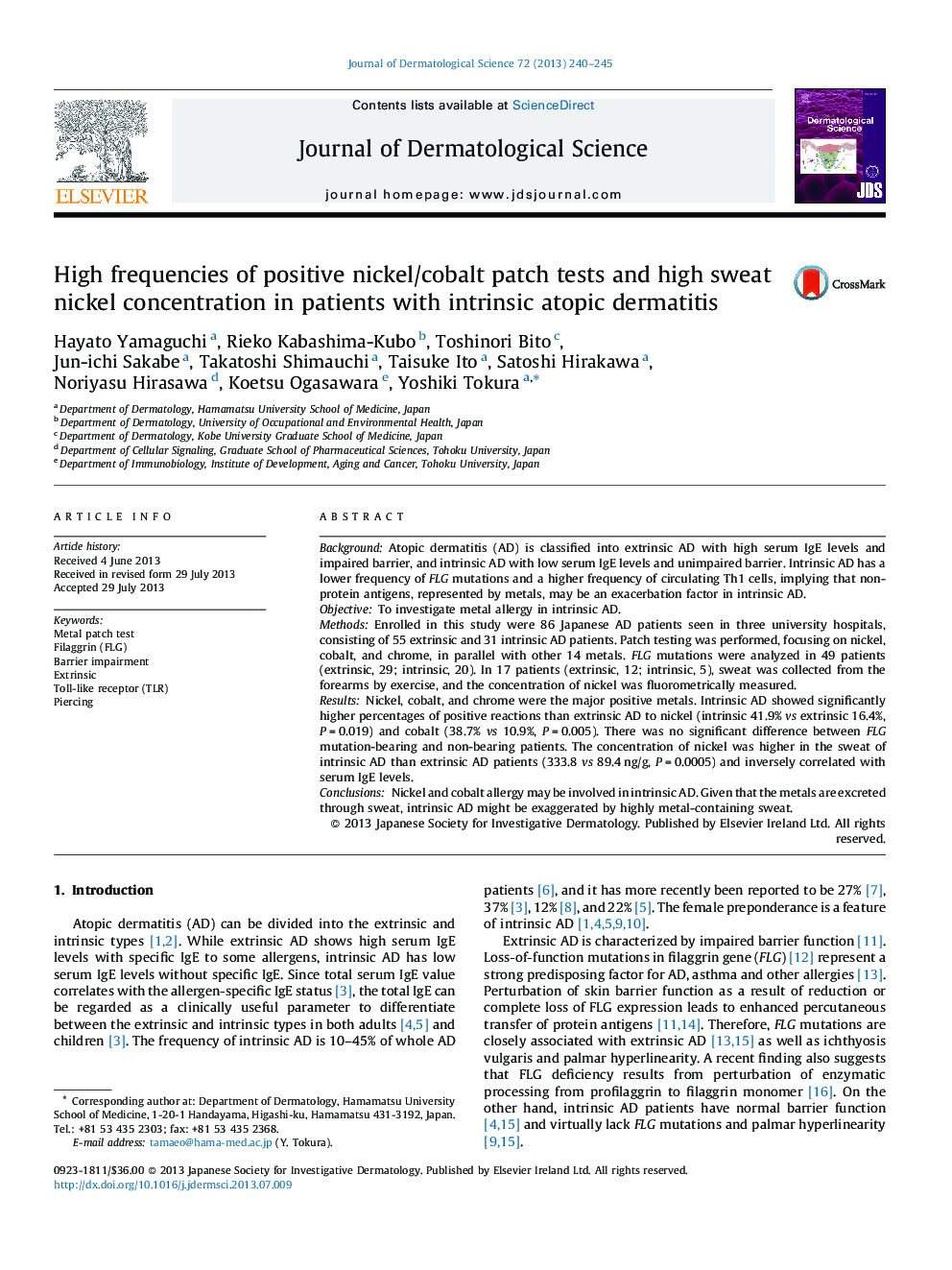| Article ID | Journal | Published Year | Pages | File Type |
|---|---|---|---|---|
| 3212913 | Journal of Dermatological Science | 2013 | 6 Pages |
BackgroundAtopic dermatitis (AD) is classified into extrinsic AD with high serum IgE levels and impaired barrier, and intrinsic AD with low serum IgE levels and unimpaired barrier. Intrinsic AD has a lower frequency of FLG mutations and a higher frequency of circulating Th1 cells, implying that non-protein antigens, represented by metals, may be an exacerbation factor in intrinsic AD.ObjectiveTo investigate metal allergy in intrinsic AD.MethodsEnrolled in this study were 86 Japanese AD patients seen in three university hospitals, consisting of 55 extrinsic and 31 intrinsic AD patients. Patch testing was performed, focusing on nickel, cobalt, and chrome, in parallel with other 14 metals. FLG mutations were analyzed in 49 patients (extrinsic, 29; intrinsic, 20). In 17 patients (extrinsic, 12; intrinsic, 5), sweat was collected from the forearms by exercise, and the concentration of nickel was fluorometrically measured.ResultsNickel, cobalt, and chrome were the major positive metals. Intrinsic AD showed significantly higher percentages of positive reactions than extrinsic AD to nickel (intrinsic 41.9% vs extrinsic 16.4%, P = 0.019) and cobalt (38.7% vs 10.9%, P = 0.005). There was no significant difference between FLG mutation-bearing and non-bearing patients. The concentration of nickel was higher in the sweat of intrinsic AD than extrinsic AD patients (333.8 vs 89.4 ng/g, P = 0.0005) and inversely correlated with serum IgE levels.ConclusionsNickel and cobalt allergy may be involved in intrinsic AD. Given that the metals are excreted through sweat, intrinsic AD might be exaggerated by highly metal-containing sweat.
